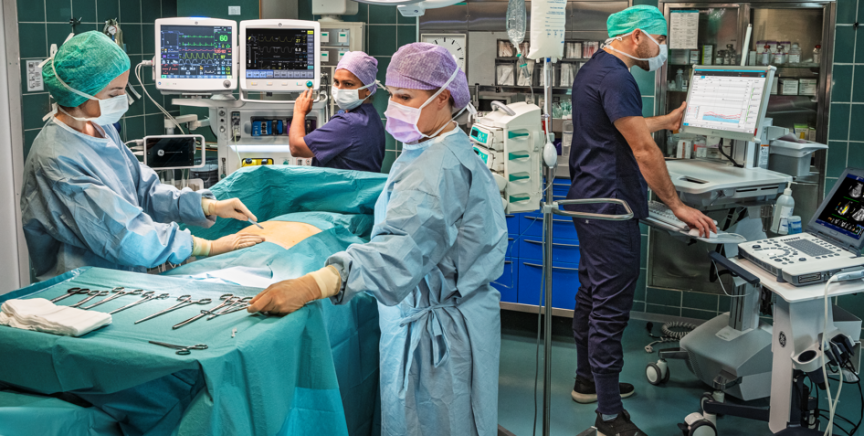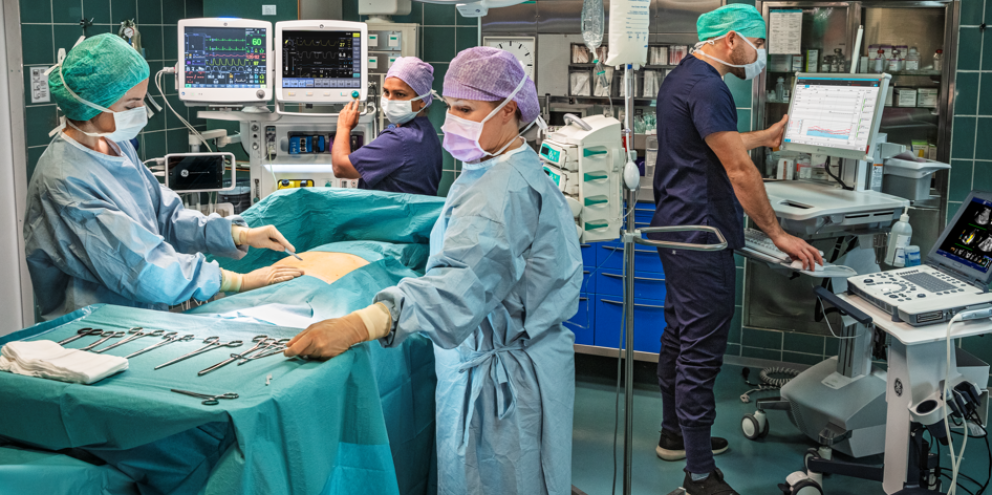
Most modern anesthesia machines are equipped with a circle rebreathing system which allows for a considerable reduction of fresh gas flow (FGF) rates. The real benefits of rebreathing techniques become evident only when the fresh gas flow rate is reduced to less than half of the minute ventilation of the patient, usually to less than 3.0 L/min.
Low fresh gas flow techniques effect the gas kinetics in the circle system, especially when FGF is less than 1.0 L/min. That makes monitoring of inspiratory and expiratory gas concentrations necessary. Comprehensive gas monitoring not only ensures patient safety, but also facilitates precise gas administration for the patient.
This text describes the general principles of low flow anesthesia techniques. It also presents clinical benefits modern technology can offer in low flow anesthesia delivery, especially when FGF is reduced to less than 1.0 L/min.1
What is low flow anesthesia?
Low flow anesthesia can be defined as a technique where fresh gas flow is adapted to satisfy the patient’s need for oxygen (about 200 mL/min) and for volatile anesthetics, but where excessive FGF may be used to vent unwanted components (e.g., nitrogen or methane) to the anesthesia gas scavenging system. In addition, there is a special CO2 absorber which removes expired CO2 from the breathing circuit. Typically, based on FGF, the following categories can be listed:2
- High flow anesthesia uses a fresh gas flow, which is close to the patient’s minute ventilation (on average 3 to 6 L/min in a normal adult).
- Low flow anesthesia uses a fresh gas flow of less than half the minute ventilation of the patient, which is most often less than 3.0 L/min on average in a normal adult.
- In minimal flow anesthesia, the fresh gas flow is reduced to 0.5 L/min.
- In closed system anesthesia, fresh gas flow is adapted to equal the patient’s need for oxygen and anesthetic agents.
Why reduce fresh gas flows?
Introduction of new volatile anesthetic agents with low solubility and low anesthetic potency has emphasized the need for reducing anesthetic agent consumption by lowering fresh gas flow. In addition to pure economic or ecological benefits, low flow may have a positive impact on the quality of patient care.
Economic benefits
Over 80% of the anesthetic gases are wasted when fresh gas flow of 5.0 L/min is used. Several studies also prove that the use of low and minimal flow anesthesia techniques can dramatically reduce the annual costs of volatile anesthetics. 3,4,5 Typically, the reduction of fresh gas flow from 3.0 L/min to 1.0 L/min results in a saving of about 50% of the total consumption of any volatile anesthetic agent.
Ecological benefits
High flow anesthesia inevitably results in pollution of the environment. Nitrous oxide, for example, is a significant “greenhouse gas”, and is estimated to be responsible for 10% of the greenhouse effect.6 Hence, reduced fresh gas flows release a lower amount of anesthetic agents into the environment, which results to less atmospheric pollution.
Quality of patient care
Anesthetic gases delivered using high fresh gas flow are usually dry and cold, whereas reduction of FGF makes gases recirculating in the circle system more warm and humid. However, with low FGF the gases repeatedly circulate through the CO2 absorber. Consequently, more heat and humidity is produced through the chemical CO2 absorption process.
Breathing warm and humid gases during anesthesia is beneficial for the patient for several reasons. Typically, warm gases maintain body temperature; prevention of heat loss during anesthesia also prevents post-operative shivering. In addition, the humidification of airway gases prevents airway and bronchial drying during endotracheal intubation.
In summary, it can be concluded that low flow anesthesia techniques not only provide considerable economic and ecological benefits, but may also improve the quality of patient care.7,8,9
References
- Baum JA, Aitkenhead AR. Low-flow anaesthesia. Anaesthesia Suppl. 50, 37-44 (1995).
- Miller RD, eds. Anesthesia, 5th ed., Ch. 4, pp 74-95. Churchill Livingstone (1999).
- Bengtson JP, Sonander H, Stenqvist O. Comparison of costs of different anaesthetic techniques, Acta Anaesthesiol. Scand. 32, 33-35 (1988).
- Cotter SM, Petros AJ, Dore CJ, Barber ND, White DC. Low-flow anaesthesia. Practice, cost implications and acceptability. Anaesthesia 46, 1009-1012 (1991).
- Feiss P, Demontoux MH, Colin D. Anesthetic gas and vapor saving with minimal flow anesthesia. Acta Anaesthesiol. Belg. 41, 249-251 (1990).
- Kole TE. Environmental and occupational hazards of the anesthesia workplace. AANA. J. 58, 327 –331 (1990).
- Logan M, Farmer JG. Anaesthesia and the ozone layer. Br.J.Anaesth. 63, 645 –647 (1989).
- Weiskopf RB, Eger EI. Comparing the costs of inhaled anesthetics. Anesthesiology 79, 1413 –1418 (1993).
- Bengtson JP, Bengtson A, Stenqvist O. The circle system as a humidifier. Br. J. Anaesth. 63, 453 -457 (1989).








